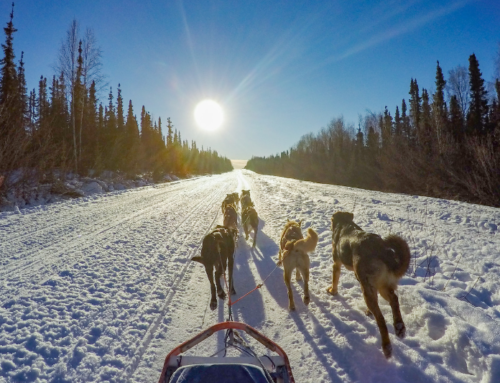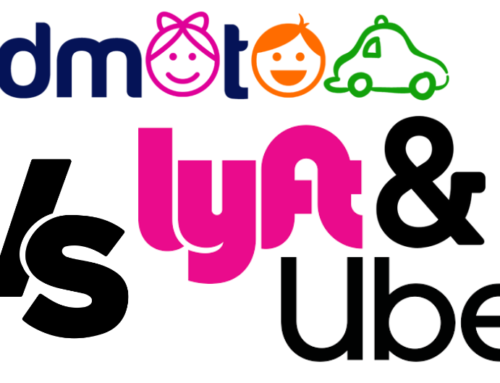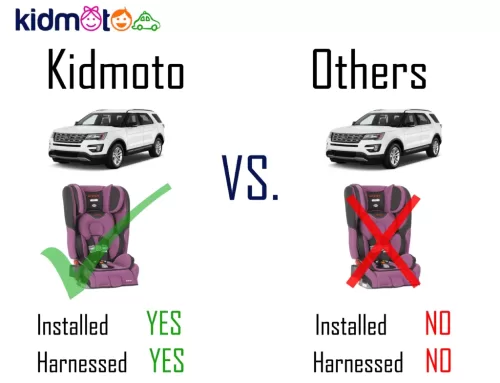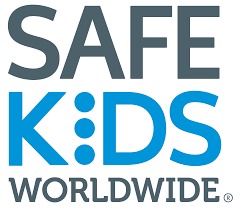Age and Weight Guidelines For Proper Car Seat Safety For 4- to 8-year-olds
When kids outgrow the height and weight limits of a rear-facing car seat, they can switch to a forward-facing car seat with a five-point harness. They should continue using this until they outgrow the height and weight requirements of that too. The next stage is a booster seat, which children normally outgrow when they grow over 4 feet 9 inches which happens somewhere between 8 to 12 years of age.
4 to 8-year-olds should either be using a forward-facing car seat with the five-point harness or a booster seat depending on their exact height and weight. When in doubt parents should stick to the car seat manufacturer’s recommendations.
Every American State has rules concerning the appropriate child restraint to be used by the child when traveling privately. Fines are levied if a parent or caregiver fails to adhere to these rules. Most States do exempt taxi services from following the car seat laws.
State Guidelines For Proper Car Seat Safety For 4 to 8-year-olds
Source: https://www.ghsa.org/state-laws/issues/child%20passenger%20safety
| State | Law |
| Alabama | Use convertible seats in the forward-facing position or forward-facing seats until the child is at least 5 years old or weighs 40 pounds.
Use booster seats until the child is 6 years old. Use seat belts until the child is 15 years old. |
| Alaska | Children over 1 year old but under 5 years old, who weigh at least 20 pounds, must ride in a federally approved child restraint.
Children over 4 years old but under 8 years old, who weigh between 20 and 65 pounds and are less than 57 inches tall, must use a booster seat or another approved child restraint.
If a child is over 4 years old but under 8 years old and is taller or heavier than the limits above, they can use a seat belt. |
| Arizona | All kids under 8 years old and shorter than 4 feet 9 inches must use a properly installed child restraint system. |
| Arkansas | Children under 6 years old and weighing less than 60 pounds must use a proper child safety seat.
Children who are 6 years old or older and weigh at least 60 pounds (up to 15 years old) can use a regular seat belt.
|
| California | Children under 8 years old who are 4′ 9″ or taller can use a seat belt in the back seat. |
| Colorado | If a child weighs more than 40 pounds or is at least 4 years old, they must be safely secured in a child restraint system, like a forward-facing car seat or booster seat, following the manufacturer’s instructions.
A child who is at least 8 but under 16 must be safely secured with a seat belt or child restraint system. A seat belt should fit properly, with the shoulder belt crossing the shoulder and chest, and the lap belt crossing the hips, touching the thighs. |
| Connecticut | Children ages 2 to 5, weighing 30 to 40 pounds, must use a rear-facing or forward-facing child restraint with a 5-point harness or booster seat, as required by the rules.
Children ages 5 to 8, weighing 40 to 60 pounds, must use a rear-facing or forward-facing child restraint with a 5-point harness or booster seat, as required by the rules.
|
| Delaware | All children must be safely secured in a federally approved child safety seat that matches their age, weight, and height until they are 8 years old or weigh 65 lbs.
Children who are at least 8 years old or weigh 65 lbs but are under 16 must use a seat belt. |
| Florida | Children ages 4 to 5 must use a crash-tested, federally approved child restraint, integrated child seat, or booster seat.
Children 6 and older must use the vehicle’s seat belt.
|
| Georgia | Children under 8 years old in a car, van, or pickup truck (except taxis or public buses) must be safely secured in a child restraint system that fits their height and weight and is approved by the U.S. Department of Transportation. |
| Hawaii | Children who are 4 to 9 years old must be safely secured in a child restraint system with a harness or booster seat that meets federal safety standards, unless the child is at least 7 years old, over 4’9″ tall, and can use a lap-shoulder seat belt. |
| Idaho | Children 6 years old and younger must be safely secured in a child safety seat that meets federal safety standards. |
| Illinois | Children under 8 years old must be secured in a suitable child restraint system. A child restraint system refers to any device approved by the United States Department of Transportation that is designed to restrain, seat, or position children, including booster seats.
|
| Indiana | Children under the age of 8 must be securely fastened in a child restraint system, following the manufacturer’s instructions for proper use. |
| Iowa | Children aged 6 years or younger must be secured in a child restraint system, following the manufacturer’s guidelines for proper use. |
| Kansas | Children over 4 years old but under 8, weighing less than 80 pounds or shorter than 4’9″, must be secured in a suitable child passenger safety restraint system that complies with or exceeds FMVSS 213 standards.
|
| Kentucky | Children measuring 40 inches or less in height must be properly secured in a child restraint system that meets FMVSS 213 standards.
Children under 8 years old, with a height between 40 and 57 inches, must be properly secured in a child booster seat.
A booster seat is defined as “a child passenger restraint system that complies with the standards outlined in 49 C.F.R. Part 571 and is designed to elevate a child for proper positioning in a federally approved lap-and-shoulder belt system.”
According to 49 C.F.R. Part 571:213 S4, a booster seat is classified as either a backless child restraint system or a belt-positioning seat. |
| Louisiana | Children aged 4 years or older who have exceeded the weight or height limits of a forward-facing child restraint system must be secured in a belt-positioning booster seat, using a lap-shoulder belt as per the manufacturer’s instructions. |
| Maine | Children under 8 years old, weighing less than 80 pounds, and shorter than 57 inches must use a belt-positioning seat (like a booster or RideSafer) following the instructions provided by the manufacturer and the vehicle. |
| Maryland | Children under 8 years old and shorter than 4’9″ must be secured in a child safety seat. |
| Massachusetts | Children under 8 years old must be secured in a child safety seat unless they are taller than 57 inches. The safety seat must be properly fastened and used according to the manufacturer’s instructions. |
| Michigan | Children aged 4 to 8 years old and shorter than 4 feet 9 inches must be properly secured in a child safety seat. |
| Minnesota | All children under 8 must ride in a child safety seat that meets federal safety standards, unless they are 4’9″ or taller. The seat must be installed and used following the manufacturer’s instructions. |
| Mississippi | Children who are at least 4 but under 7 years old, and who are shorter than 4’9″ or weigh less than 65 pounds, must use a booster seat that meets federal safety standards. |
| Missouri | Children weighing less than 40 pounds, no matter their age, must be secured in a child safety seat suitable for them.
Children aged 4 to 8, who weigh between 40 and 80 pounds and are shorter than 4’9″, must use a child safety seat or booster seat that fits them.
Children who weigh 80 pounds or more, or are taller than 4’9″, must be secured with a vehicle seat belt or a booster seat that fits them.
If a child would normally need a booster seat but the vehicle’s back seat only has a lap belt, they can ride in the back seat with just the lap belt if the seat doesn’t have a lap-and-shoulder belt for the booster. |
| Montana | Children under six years old who weigh less than 60 pounds must be secured in a child safety seat that fits their weight and height, according to the manufacturer’s guidelines. |
| Nebraska | All children up to age 8 must be transported in a properly installed child safety seat that meets FMVSS 213 standards and placed in the back seat. |
| Nevada | Children under 6 years old and shorter than 57 inches must be secured in a federally approved child safety seat that is right for their size and weight. The seat must be properly installed and attached to the vehicle, following the manufacturer’s instructions. Children 6 years and older can sit in either the front or back seat and must use a seat belt if one is available. |
| New Hampshire | Children under 7 years old or shorter than 57 inches must be securely fastened in a federally-approved child safety seat, following the manufacturer’s instructions. |
| New Jersey | Children under 8 years old and shorter than 57 inches must be secured in a forward-facing child safety seat with a 5-point harness (until they exceed the seat’s height or weight limits) or in a booster seat. |
| New Mexico | Children ages 1 to 4 or who weigh less than 40 pounds must be secured in a federally approved child safety seat.
Children ages 5 to 6 or who weigh less than 60 pounds must be secured in either a booster seat or a federally approved child safety seat. Children ages 7 to 12 must be secured in a child safety seat or with a seat belt. |
| New York | Children under 4 but weighing more than 40 pounds must be secured in the right child safety seat, using a lap-shoulder belt or a lap-only belt if a lap-shoulder belt isn’t available.
Children aged 4 to under 8 must be secured in an appropriate child safety seat. Children ages 8 to 16 must be secured with a lap-shoulder belt. |
| North Carolina | Children under 8 years old and weighing less than 80 pounds must be secured in a child safety seat that is suitable for their weight and meets federal standards.
If there’s no seat with a lap-and-shoulder belt to properly secure the child safety seat, a child between 40 and 80 pounds and under 8 years old can be secured with a properly fitted lap-only belt. A RideSafer with a tether strap is a good option in this case.
Once a child turns 8 or weighs 80 pounds, they can use a properly fitted seat belt instead of a car seat or booster seat. |
| North Dakota | Children under 8 years old must use a child safety seat according to the manufacturer’s instructions.
If the child is younger than 8 but at least 57 inches tall (4’9″), they can use the seat belt correctly. |
| Ohio | Children aged 4 to 8 years old and shorter than 4’9″ must use a booster seat that meets Federal Motor Vehicle Safety Standards. |
| Oklahoma | Children aged 4 to 8 years old and shorter than 4’9″ must be secured in a child safety seat or booster seat. |
| Oregon | Children who weigh more than 40 pounds and are 4’9″ or shorter must be secured in a child safety seat that lifts them so the seat belt or harness fits correctly. This means the lap belt should sit low on the thighs, and the shoulder belt should be across the collarbone, not the neck.
If the vehicle’s rear seat doesn’t have lap-shoulder belts, the child can be secured with a lap belt or a child safety seat that meets the required safety standards for children over 40 pounds.
Children taller than 4’9″ or 8 years old must be secured with a seat belt or safety harness. |
| Pennsylvania | Children aged 4 but younger than 8 must be securely fastened in a seat belt and an appropriate child booster seat, as specified in subsection (d).
(d) Standards:
A child safety seat must be used as directed by the manufacturer in vehicles with seat belts and must meet the Federal Motor Vehicle Safety Standard (49 C.F.R. § 571.213). A booster seat must be used as directed by the manufacturer in vehicles with seat belts and must meet the Federal Motor Vehicle Safety Standard (49 C.F.R. § 571.213). This seat is designed to lift the child so they can sit properly in a federally approved seat belt system. A “booster seat” is defined in 49 C.F.R. § 571.213 as either a backless child safety seat or a belt-positioning seat. |
| Rhode Island | If the child is under 8 years old but at least 57 inches tall or weighs at least 80 pounds, they must properly wear a seat belt and/or shoulder harness in any back seat of the vehicle. |
| South Carolina | A child who is at least 4 years old and has outgrown their forward-facing car seat must use a booster seat in the back seat of the vehicle, secured with a lap-shoulder belt, until they meet the height and fit requirements for an adult seat belt.
A child who is at least 8 years old or 57 inches tall can use an adult seat belt if it fits properly:
The lap belt should lie across the child’s thighs and hips, not the stomach. The shoulder belt should cross the center of the child’s chest, not the neck. The child should be able to sit with their back straight against the seat and their knees bent over the seat edge without slouching. |
| South Dakota | Children aged 5 to 18 must wear a properly fitted seat belt. |
| Tennessee | Children ages 4 to 8 who are shorter than 4’9″ must be properly secured in a federally approved booster seat in the back seat, or according to the instructions from the child restraint system or vehicle manufacturer. |
| Texas | Any child under 8 years old must be secured in a child safety seat according to the manufacturer’s instructions. |
| Utah | The driver of a vehicle on the highway must ensure that any child under 8 years old is secured in a child restraint device, following the manufacturer’s instructions. Children under 8 don’t need a child restraint if they are at least 57 inches tall. In that case, they should use the lap-shoulder belt. |
| Vermont | Children who weigh more than 20 pounds and are between 1 and 8 years old must be secured in a child passenger restraint system. |
| Virginia | Children up to the age of 7 (until they turn 8) must be secured in a child restraint device. |
| Washington | Children who are not properly secured in a rear-facing or forward-facing harness and are under 4’9″ tall must use a booster seat. Children can stay in a booster seat until the seat belt fits them properly, usually between the ages of 8 and 12, based on the 5-step fit test. |
| Washington DC | Children under 8 years old must be properly seated in an infant, convertible (toddler), or booster seat, following the manufacturer’s instructions. A booster seat should only be used with both a lap and shoulder belt. |
| West Virginia | Children under 8 years old must be secured in a child safety seat that meets federal safety standards. Children under 8 who are at least 4’9″ tall can use the vehicle’s seat belt. |
| Wisconsin | Children who are at least 4 years old, weigh at least 40 pounds but less than 80 pounds, and are shorter than 57 inches must be properly secured in a federally approved forward-facing car seat or booster seat. |
| Wyoming | Children under 9 years old must be properly secured in a child safety seat in a rear seat, unless the vehicle only has one row of seats or all the rear seat belts are already being used by other children. Children under 9 can use the vehicle’s seat belt if the lap and shoulder belt fit properly across their collarbone, chest, and hips, without putting pressure on their neck, face, or abdomen in case of a crash or sudden stop. |
Wrapping Up
As a parent, it’s important to be aware of the child safety laws so that you do not end up paying fines needlessly. While taxis are exempt from these rules in most states, don’t compromise the safety of your children. Choose a ride-hailing service that comes with pre-installed kid seats for a safer ride! Choose Kidmoto.






